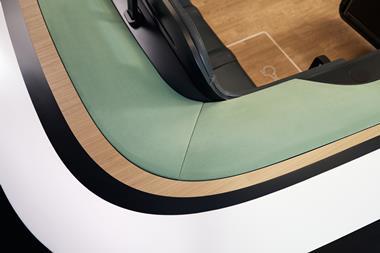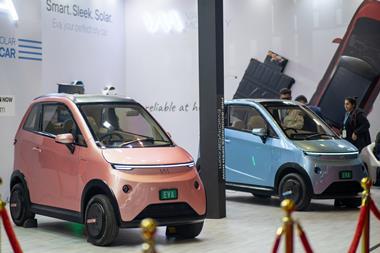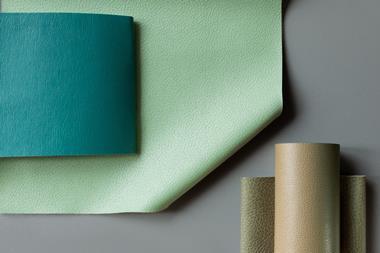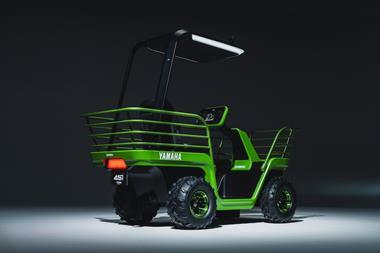Plastics have been used in car production for decades. Extolled for being light, tough, mouldable and highly versatile, they offer significant design freedom and can be formed into unusual shapes as well as drawn into filaments for textile fibres, reducing component cost, complexity and weight.
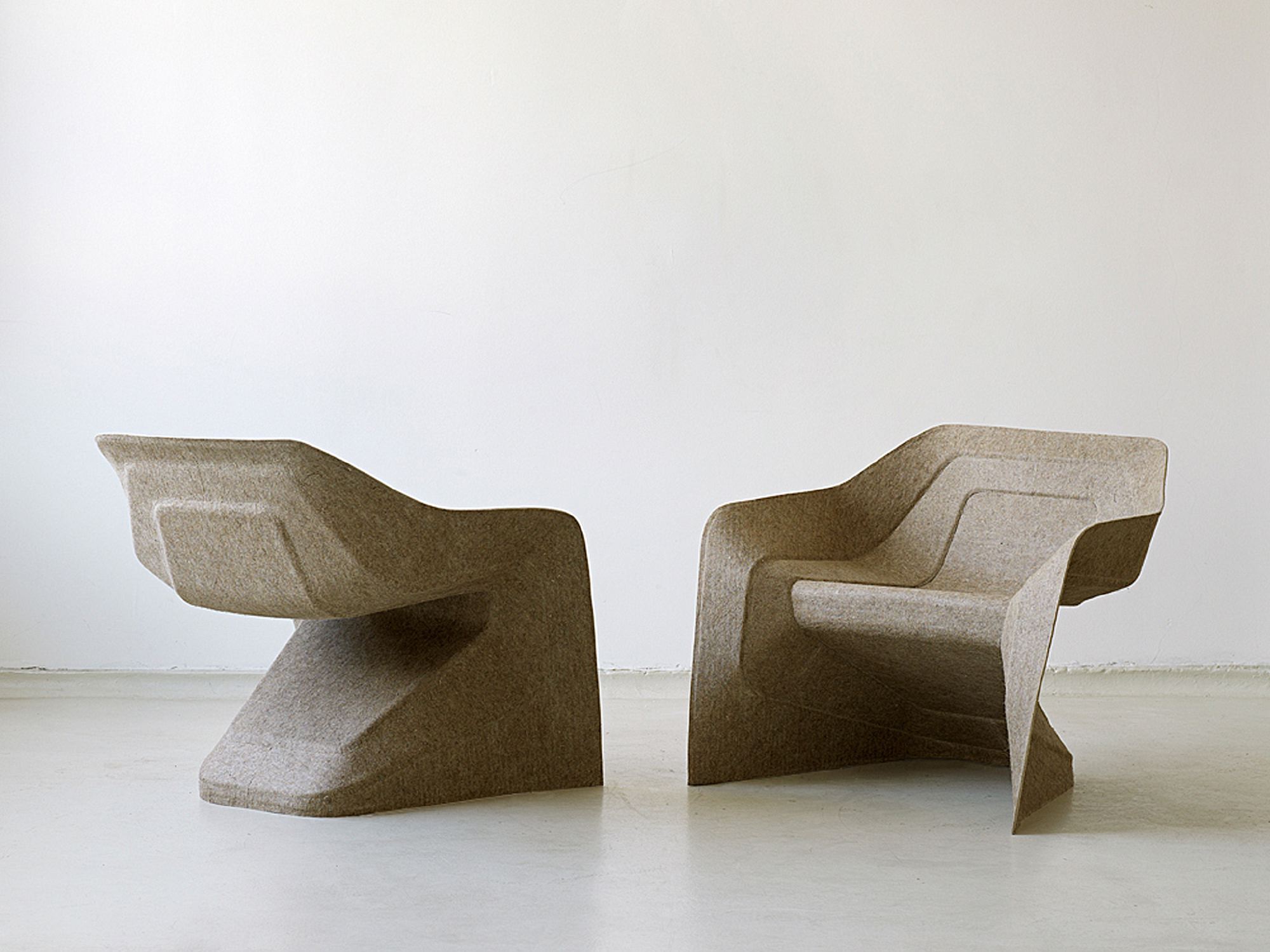
Hemp chairs by Berlin-based Studio Aisslinger using BASF materials
Though these materials have been used to great effect in furniture and product designs – most famously for the iconic Panton plastic chair, which couldn't have been made in any other material – they are often not used to their full potential in car design; chosen for their structural and weight advantages rather than as an aesthetic choice in their own right.
Now, thanks to changes in consumer tastes and advances in materials and production, technology plastics are be having something of a design renaissance.
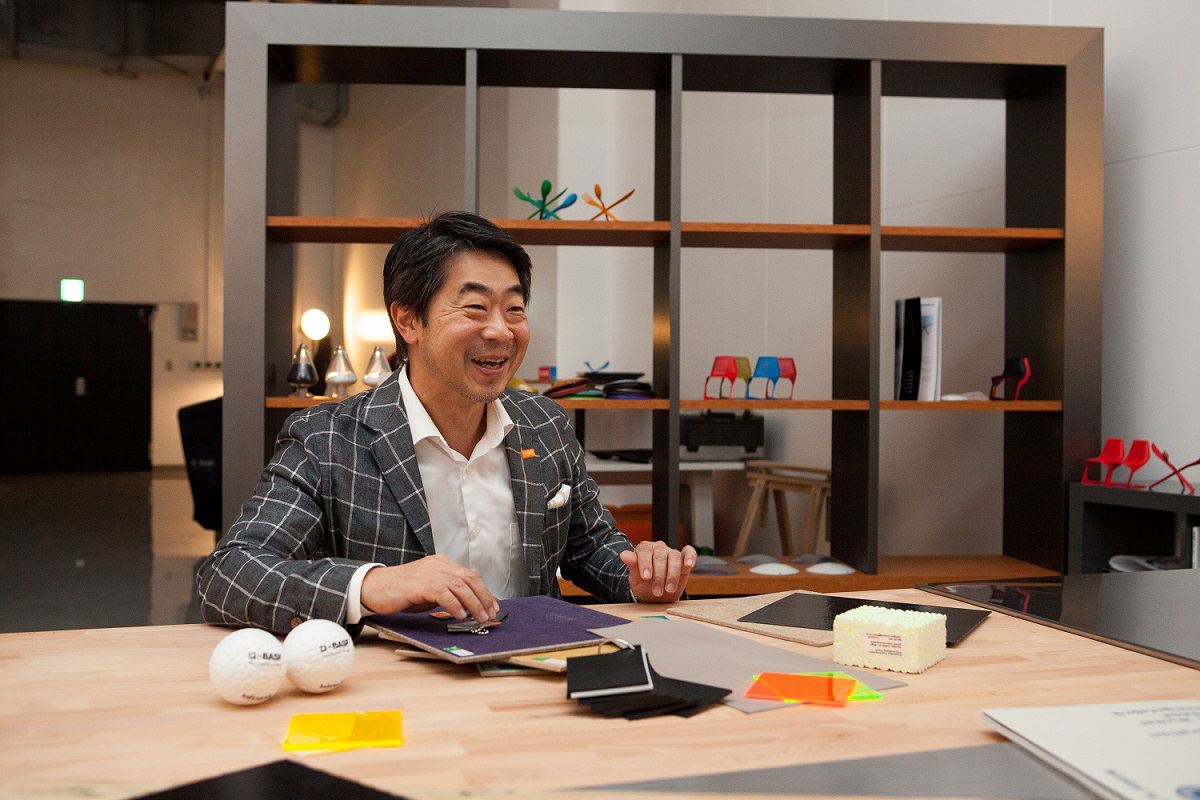
Toshifumi Tanakai, vice director, designfabrik Tokyo, BASF Japan Ltd
There is now such a high demand for more creative uses of plastic in car design that global plastics producer BASF opened its second designfabrik studio in Tokyo in October 2014 – the first is at the company’s headquarters in Ludwigshafen, Germany. The designfabrik consultation centre has been conceived to help car designers and engineers get the best out of BASF materials by advising them from the earliest stages of product development.

Winkel w127 lamp by Wästberg using BASF materials
BASF experts can guide designers through every phase of the design process, on colour, material and surface finishing, and material choice and optimisation. The goal is to achieve better results, particularly in terms of aesthetics.
“Connecting industrial designers, educational institutions and customers allows us to realise unique products and design visions with BASF’s materials,” explains Toshifumi Tanakai, vice director, designfabrik Tokyo, BASF Japan Ltd.
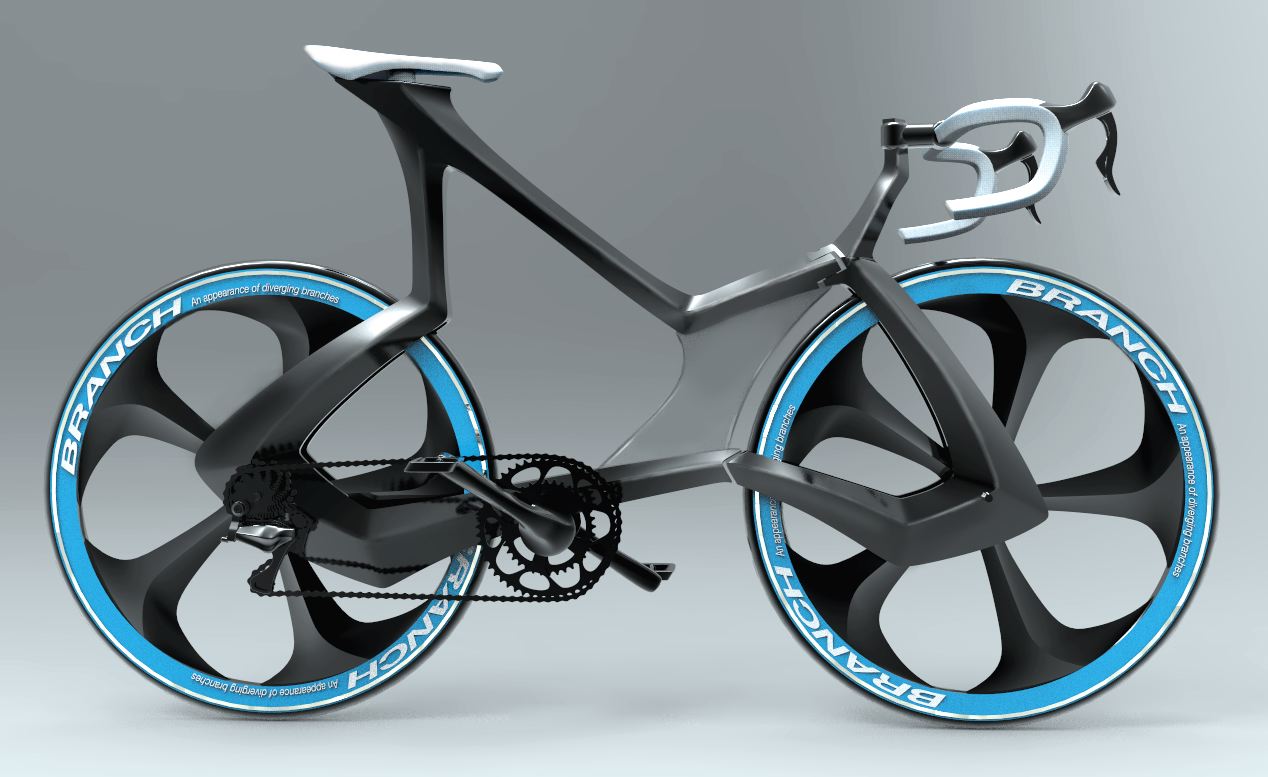
Work from BASF's collaboration with Tama Art University
Recently designfabrik Tokyo partnered with students from Tama Art University to explore how BASF’s high-performance plastics can be used in unexpected ways. Under the theme of ‘gyro-centric design’ (non-movable, wheeled products), eight product design students developed innovative product designs including a bicycle, shopping cart and a children’s pedal car.
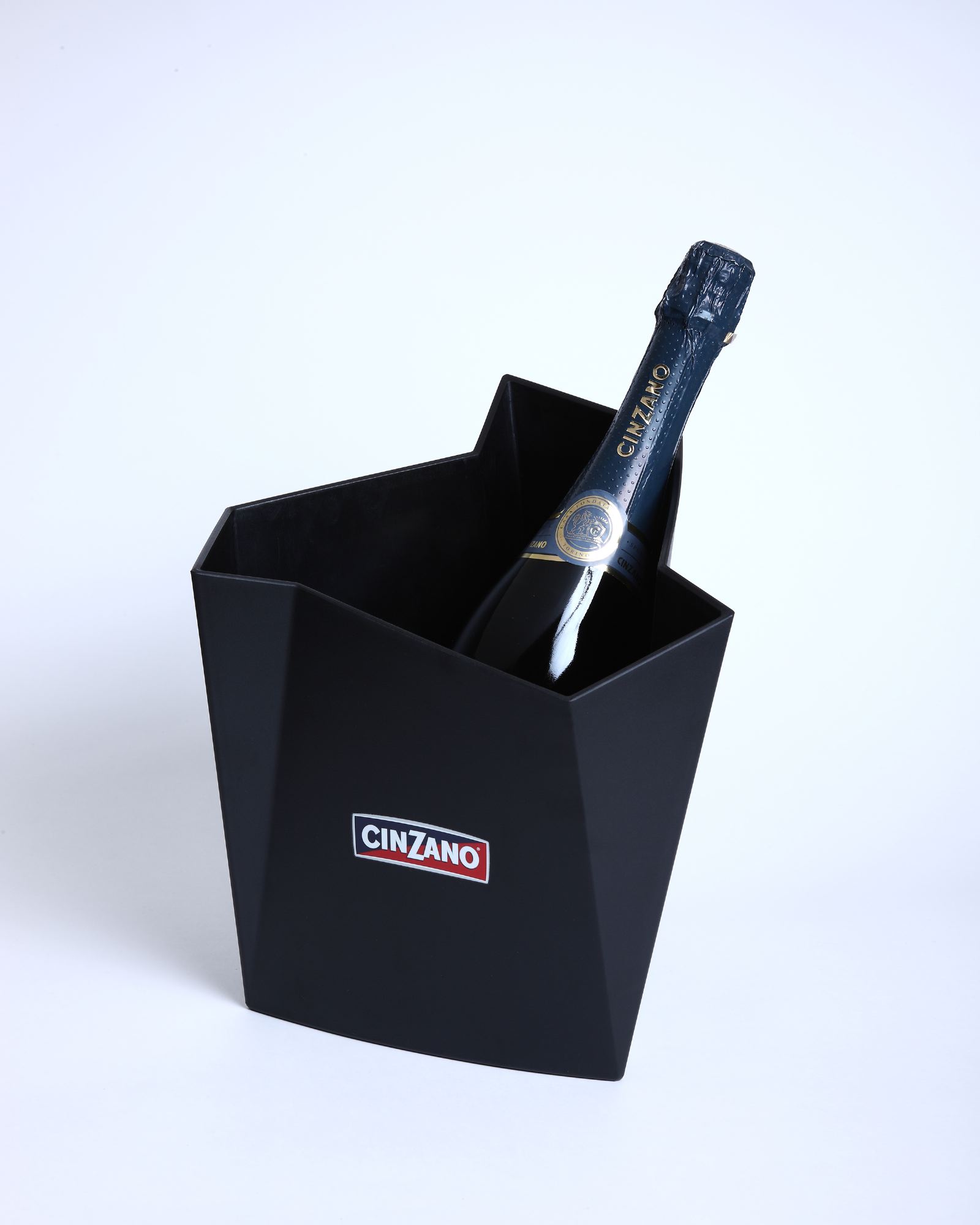
Cinzano Spumante wine cooler in Ultramid by Ken Okuyama
Similarly, one man already well-known to the car industry, industrial designer and former Pininfarina designer Ken Okuyama, worked with the studio to explore the potential for using Ultramid polyamide as a material for a wine cooler.
It was an unorthodox choice to say the least because Ultramid is a glass-fibre-reinforced polyamide which is typically used in the manufacture of components including oil pans, air intake manifolds and bumper stiffeners. Designed in matte black, the resulting ‘Cinzano Spumante’ wine cooler is used at selected restaurants and shops throughout Japan.
“This project is unique in combining the individual expertise of a liquor company, a chemical company and an industrial designer,” says Ken Okayama. “Shaping characteristics and surface finishing of the material which is mostly applied to structural parts of cars, reveals new possibilities.”
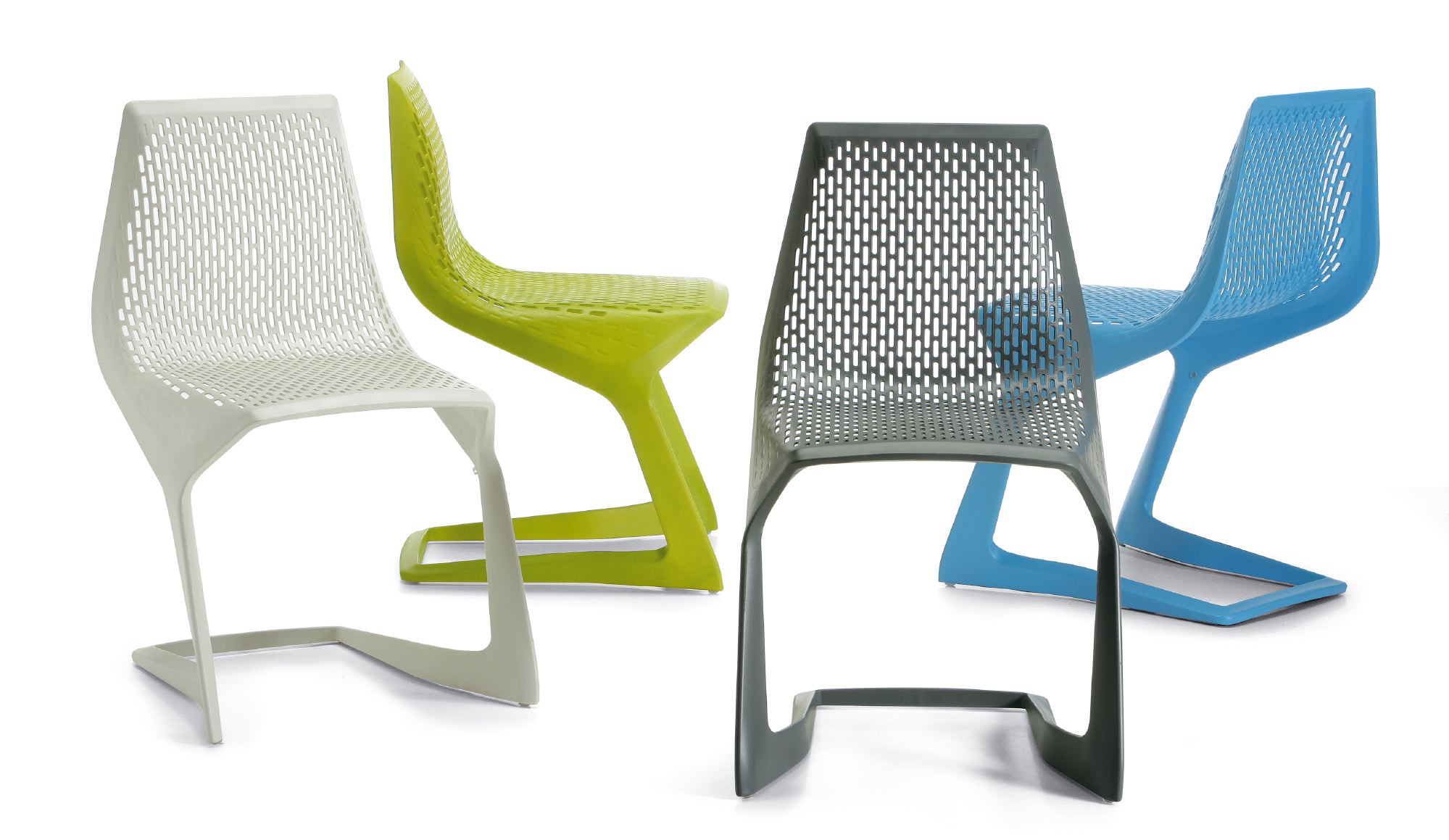
Entirely plastic Myto Chair by designer Konstantin Grcic
It’s an example of how designers can now take advantage of the right plastic, used in the right way, to transform an end product. “Deciding on the right material is critical to making the design feasible for production as well as conveying the right look, feel and perceived value of the end product,” adds Tanakai. “Our partnership with Ken Okuyama and a liquor company is an excellent example of how collaboration from an early stage of product development and use of our extensive service platforms such as designfabrik help our customers from different industries realise their innovative ideas.”































